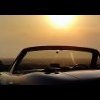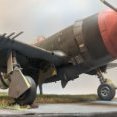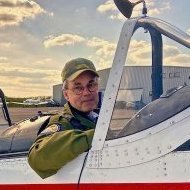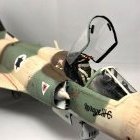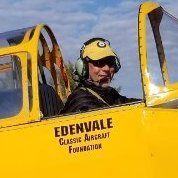Search the Community
Showing results for tags 'spitfire'.
-
Although not a fan of Revell soft plastic, I like how this kit came together. I used montex masks and HGW seatbelts and some Resin and an instrument panel, Yahu I think, inside the cockpit. my first attempt at oil washes.Next time ill keep the clear off the canopy, at the time it didn't occur to me that the laquer would fog the clear parts. So much dust too, I think tissues and a cotton drop sheet will have to go.
-
Hello All, Those of you that have seen my other build of three 1/32 Avro Lancasters will now know that I am still alive, just taking a break.. I have been asked by someone very special to build a 1/24 Spitfire with the subject being The Supermarine Spitfire Mk.IXe, ML407, Sq Ldr John 'Johnnie' Houlton This of course is now 'The Grace Spitfire' The base kit of course is the 1/24 Airfix Mk.IXc Kit. I make no apologies if I call ML407 a she; such a beautiful aircraft with such a wonderful history; Before I start the build thread I need to say that I am totally inspired by Wolf's 1/32 Spitfire build, something to aspire to. THE FUSELAGE HALVES I took the fuselage halves, stripped them down to the level I needed and filled in the ejector marks. The intention is to show both fuel tanks so VERY carefully, I took the armour plating off as well. The TR9 will be shown so I removed the radio hatch door too. First things first was to design my own photo etch; I really wanted to show the hollow frame nature of her; I also used the templates from the 1/24 Spitfire Cockpit Download from The Hawaiian Air Depot Site; https://www.hawaiianairdepot.com/ After fitting the etching, 1,764 Rivets were individually placed using Quinta Studio Rivets of various sizes; She is going to be powered and lit up too so I managed to hide the cables behind the side walls. I am going to feed the power cables through the ground power connection. It was then a spray with Semi Matt Varnish to seal the rivets, a base coat of dull aluminium, chipping fluid then Ammo RAF Interior Green; Hope you like what you see so far, onto the frames and bulkheads! Thanks for looking... Cheers Steve
-
Hello all of you shiny, happy people. I hope everyone is well. A little while ago Airfix released a large scale MkIX Spitfire in 1/24th scale. I was lucky enough to be at the launch event and was blown away by the look of the models on display. I resolved there and then to treat myself to one. I got the kit in December 2023 and began it shortly after unwrapping it on Christmas day. The kit is substantial and relatively easy to build although it gets a tad unwieldy due to it's size so care must be taken in the latter stages of the build. For a kit this size the detail is good. However, there are many aftermarket parts available that improve the look still more. I opted to enhance the cockpit by scratch building a few elements and treating myself to the beautiful Airscale cockpit upgrade. To my mind this is a must for this model. It takes patience to assemble but improves the face of the cockpit no end. The other bits of aftermarket that I'd recommend would be a set of wheels, an entry door and exhausts. There are a few wheel sets available. The ones I went for were by Eduard The detail is great and the wheels look the part but for some reason the subtle molded in flat spot doesn't sit flat on the ground when they are fitted so some judicious sanding is required. If you choose to use these be aware of this before glueing them in place. The door is by Buchon models and is a definite improvement over the somewhat chunky kit part. Lastly, one area where Airfix really dropped the ball is the exhaust stubs. What were they thinking? For a start these are molded in two parts but not where a seam line falls. If two parts are necessary why not make the join along an actual seam? Also, there is a huge hole in the underside of each stub that has to be filled. I can't help wondering if the designer was off the day these were created and the janitor had a go..... Fortunately Eduard come to the rescue with a beautiful 3D printed set. Another must for this build in my humble opinion. Airfix include a plethora of markings but for this build I turned to a combination of 1ManArmy masks and some custom masks kindly created for me by Mozart here on LSP. Many thanks Max I was hoping that painting the markings would give better results in this scale. All of the masks worked beautifully and the fidelity of the stencils needs to be seen to be believed. Add one more to the "must have" list for this build. The 1ManArmy set replicates the markings offered in the kit but my aircraft depicts an aircraft of 412 RCAF sqdn. This squadron was formed in 1941 at RAF Digby in Lincolnshire which is only a stone's throw from where I live. Thank you for your patience so far. Now after this pre-amble it's on to the RFI photos. Setting a couple of hiccups aside (I lost one of the Eduard exhaust stubs) I'm pretty happy with how it turned out. If I were to build another I'd definitely thin the aft lip of the ailerons. I'd also buy a set of turned brass cannons. Getting the two part plastic components round and filled was too much fuss. For a kit assembler like me this Airfix product is nigh on perfect. Plaudits to them for giving us a very good representation of one of the most popular marques of Spitfire. Thanks for your time. I hope you enjoyed this. If you'd like a more in depth article please have a look here for the WIP thread. Cheers, Guy
-
Hi, everyone. I guess it's time to get my membership card to the Kotare Klub as there seem to be about a million of these in the WIP forum right now. Since finishing my Corsair diorama, which took months, I wanted a quick, straight forward build as something of a palate cleanser. My son said he thought it'd be neat if I did a Spitfire, I had the Kotare Mk Ia (mid) kit in the stash, I've never build a British aircraft before, and so, fate was decided. I departed from my usual MO of recreating an historical photograph and decided to just do a fictional, but feasible scene. I've wanted to depict battle damage on an aircraft since I was kid, but never really had the skills or practice till now. So, being that this kit has a low parts count and went together really nicely, I decided it would be a good platform to try my hand at damage. I thinned the interior plastic walls with a low rpm rotary tool, carefully punched and pried holes in the weakened area, then painted and streaked the area to look the part. Aside from the rigging wire (EZ-line), figures (Black Dog Resin, out of the box), and the base (el cheapo panel board), the kit is presented out of the box. I even used the decals in lieu of my usual gig of cutting masks and painting. This experience reminded me that I'm way out of practice working with large decals, but after a few minor scares, they turned out okay. This is a Spitfire Mk Ia of 610 Squadron sometime in the summer of 1940 before it was damaged beyond repair that August. "Bit of a rough go today, eh, chap?"
-
Today we take a look at the latest from Fantasy Printshop - in this case a set of decals for the new Spitfire Mk.Vb kits in 1:35 from Border Models. An excellent variety of markings for anyone looking to build the Spit Vb in this slowly expanding aviation scale. Blue skies, Iain
-
More photos from my series of posts from my visit to The Royal Air Force Museum London in 2022, and the second set of walkaround images. These are of the Supermarine Spitfire F.24 PK724, part of the "War in the Air 1918–1980" exhibit in Hangars 3, 4, and 5. I was not able to get access to the cockpit to take any photos. PK724 was built in 1946 and only had seven flying hours before it was declared a “non-effective airframe” and moved to RAF Norton, Sheffield for instructional use and then as a gate guardian at RAF Gaydon, Warwickshire. It almost participated in the Battle of Britain film but ended up not being rebuilt to flying condition for that. In 1971 it was moved to the RAF Museum. It is one of only three surviving Spitfire F.24s. This info and more about the history of this airframe was taken from: https://www.rafmuseum.org.uk/documents/collections/74-A-22-Spitfire-24-PK724.pdf Thanks for looking, and I have many more pictures to share
-
Greetings fellow modelers: This was one of the most enjoyable projects I've done. The Kotare Spitfire Mk.Ia "Brian Lane" kit is fantastic. The Kotare team certainly put a lot of effort into creating a wonderful build experience for the modeler. And they pulled it off. In this brief, ready-for-inspection summary I'll share my build overview, my thoughts on the kit and some recommendations for future kit builders as I go through the photos. Here's a link to the build: Ok, here's my rendition of QV-K P9386 from September 1940. The quality of the molding, engineering, decals, and thoroughness and thoughtfulness of the 24-page instruction book really made this project a pleasure. I built the kit completely out of the box with the exception of Eduard masks for the canopy. Kotare's design philosophy made for a superb assembly process. Each main engine panel was molded as an individual part -- no seam lines or glue clean up. The fuselage aft section parts all intersect at panel line joins. The wing fairings are each single molded parts that fit perfectly. It's designed so that one can assemble the entire plane almost without a single seam line that intersects a rivet line or panel line. What a pleasure. The only area where this occurs is underneath the aft section of the fuselage -- conveniently away from normal viewing. I can't think of a single situation where the fit was not PERFECT. For example, there is only one way to install the landing gear struts. Full stop. There's no play, no wiggle, no uncertainty. One of the best designs I've seen. The horizontal stabilizers are one piece and there's only one way to install it for a nice, tight fit in perfect alignment. The prop assembly installs by literally fitting a square peg in a round hole for a perfect fit. Another nice treat is that the rudder and elevators are positioned off-center and match the positions of the control stick and rudder pedals in the cockpit. I haven't seen that before. That's just one of the many nice details and surprises discovered as one works through the build. Even the trim tabs are offset slightly. As for painting, the instructions provide extremely helpful guides for painting the cockpit as well as the exterior. For the cockpit, painting call outs are provided during the build steps and there are also summary diagrams with multiple views in full color. For the exterior, four full color views are provided for the aircraft with color call outs and key points. I used Mr. Color lacquers for the main camo colors (C361 for Dark Green and C369 for Dark Earth) and MRP Marking Yellow for the spinner. I mixed by own version of Sky Blue for the underside using Mr Color White, RLM 76 and Sky Blue. Since I wanted to emphasize color variation across the different subassemblies as the instructions pointed out, I painted some of the panels a little darker or lighter or a slightly different shade of green or brown. For example the fabric covered sections are a little more faded than the metal sections. I used the kit decals by Cartograf, which were fabulous -- perfect color, perfect register, nice and thin, no excess carrier film. All good. The main challenge with the decals was getting them to settle over the raised rivet areas on the aft part of the fuselage. It took several days of bubble popping and decal solution application to get them to finally behave around the rivets but they got there. I planned out the weathering process at the start of the project. My goal was to reflect what I saw in the reference photos -- and there are multiple clear photos of P9386 as well as several other Spitfires that are very helpful. One of the photos of a real spitfire elevator section has a humorous caption highlighting that there's no evidence of preshading on the fabric area. After priming with Mr Finishing Surfacer 1500, I painted the wing roots MC201 Super Fine Silver, then applied AK worn effects fluid over the silver areas. I pre-shaded the panel lines in black and then applied heavy marbling using spatter templates and random airbrush patterns to break up the solid panel colors. After the main camo painting, I dabbed the wing root areas with a wet brush to get the chipping effect I was after. Next was a gloss coat to seal in the chipping and prep for decals. After the decals and flat coat, I augmented the chipped wing roots with a sharp silver Prismacolor pencil to add some scratches and make some of the chipped areas "less round" and more random looking. The exhausts each are molded in top and bottom halves. There's a nice close up photo in the instructions showing the weld seams that can be replicated when you glue the exhausts together and let some glue squeeze out of the seams. I needed to add a little material to the tips of the exhausts to get the proper shape and I used my motor tool to drill out the exhaust interiors. I used reference photos for guidance on painting the exhausts. I started with gloss black and then applied a 1:1 mix of Mr Color Metallic Black and Super Stainless. After the decals were applied on the lower side of the manifolds, I used Tamiya acrylics to achieve the exhaust gas/heat color pattern. Black, purple, brown, orange, and deck tan were used. The cockpit detail that comes with the kit is astounding in my view. The instrument panel dials all have individual decals and there are placards all over the place - sidewalls, compass, gunsight, etc. Also, in the photo above, the molded seatbelt harness is visible, which I think looks pretty good. The figure of Brian Lane was a nice bonus and here's my attempt at painting him. There's a nice painting guide in the instructions. Overall Summary of the kit: Highlights Clear, detailed, comprehensive instructions. I may keep the book as a reference for other builds. Excellent. Design and fit for easy assembly and minimal clean up. Decals by Cartograf - cockpit decals and placards as well as the main markings and stencils Brian Lane figure - Colorful RAF pilot uniforms are great subjects. Aircraft interior and exterior color profiles in the instructions Surface detail - stressed skin effect around some fasteners, rivets, panel fasteners, hinges -- all good. Fine and consistent panel lines Landing gear design - "weighted" wheels with flat spots and slight bulges. Things to look out for (for future builders) My copy had some very slight molding sink marks on the tops of the wings above the wheel wells. Easy clean up. The exhaust manifold tips needed some extra filler material (CA glue). Again, easy clean up. The molded seatbelt harness is fairly thick in the section between the seat top and the armor plate slot. I thinned the seatbelt quite a bit by scraping underneath and cleaning up. Another option is an aftermarket seatbelt as the kit provides a seat without the molded seatbelt. Some of the molded detail needed a little sprucing up. Nothing major. Thanks for looking. Needless to say, I highly recommend this kit. Comments and critiques are more than welcome. - Jim Jenson
- 23 replies
-
- battle of britain
- raf
-
(and 6 more)
Tagged with:
-
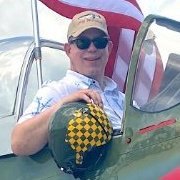
*** 1/32 Kotare Spitfire Mk.Ia "Brian Lane" COMPLETE ***
Hoss FL posted a topic in Works in Progress
Well, I'm back to 1/32 after a few armor projects and several 1/48 kits. I picked this kit up this summer and am really looking forward to the build. The plan is to build it completely out of the box with no aftermarket and I think the kit has all the detail needed for an excellent rendition of this bird. This is the one marking option, but the subject is very well researched. The instructions are very detailed with photos and historical tidbits. A fun build experience so far. I just got started on the cockpit and will post updates along the way.- 87 replies
-
Hello folks, Does anyone know whether an aftermarket gunsight is available amongst the plethora of bits for the Airfix MkIX Spitfire please? I'm using the MkII version for my build but the later gyro version could do with sharpening up too. The kit parts are ok but could stand some finessing. I'm giving it a go but my attempts are honestly quite poor. It would be neat to be able to add a nicely detailed resin or 3D printed part since it's quite prominent in the cockpit. Eduard made one in 1/32nd scale but they don't have a 1/24th scale alternative. Any and all help is appreciated. Cheers, Guy
-
- airfix spitfire
- airfix 1/24 th.
-
(and 2 more)
Tagged with:
-
Eventually, I've got around to finishing my South African Air Force Spitfire Mk 9 LF. I built this quite some time ago, but couldn't source the correct propeller decals, so it languished in it's polystyrene box until Peter Castle @airscale produced his prop logo decals! Thanks Peter!! This is the Tamiya Spitfire Mk XVIe kit (I'm sure everyone knows how superb the kit is, so I won't go into that), but there were a few modifications I had to make to it in order to get it to the spec that it was in during it's time at the SAAF Museum at AFB Swartkop in Pretoria. This particular aircraft, manufactured in 1945, was flown by by brother-in-law, Maj. James "Jimmy Jet" Feuilherade (Ret) as it's display pilot during his tenure there (1999-2000). It was unfortunately written off during a display accident (15th April 2000), not long after he resigned and emigrated to Australia to take up a position as a flight instructor for BAE Systems. I know he mourned the loss of HIS "British girlfriend" (as my sister used to call it). This build is in homage to Jimmy Jet! Kit - 1/32 Tamiya Spitfire Mk XVIe AM- Barracuda Studios seat, cockpit upgrade (sidewalls, door, throttles, etc), wheels. Alleycat decals (didn't have my Silhouette when I built it, wished I had. The decals were probably old, had quite a few "moments" with them!) Master Barrels And quite a bit of cockpit modification (see the info from James below - all those mods were carried out)) Below are some excerpts from emails James sent me regarding this particular airframe, which helped tremendously with the build. I'm pretty sure he wouldn't mind me sharing some of it... She was actually a rare low back MkIX, powered by a Rolls Royce built Merlin 70 engine. But I hasten to add, there was no difference at all in the MkIX and the MkXVI airframes. The only reason they had the two different Mk numbers was the fact that the American Packard built Merlins were all built using American Imperial size threads bolts and studs. This basically made the Packard Merlins and the RR Merlins incompatible in terms of spares interchangeability. So to avoid huge logistics spares mix ups, they came up with designating all Packard built engine Spitfires, MkXVI’s. The gunsight was removed but I recall she had the rotatable throttle lever, which was normally used with the later gyro sight, so by twisting the throttle handle you could adjust range on the gunsight. An early version of HOTAS I guess! As I recall the seat only had a padded black leather cover, covering the backrest only. I flew it wearing a Harvard parachute which is the same as the WW 2 parachutes. So you sat on the parachute which was held in the seat bucket. The seat was made from Bakelite so was a reddish brown colour. The flare cartridge rack was removed from the front of the seat. The harness was a modern version with medium blue straps as I recall, I think as used on many Spits flying in the UK today. I think it had an olive green lap strap padding aswell. There was a slight difference to the panel in that the U/C indicator lights were moved to the lower RHS of the panel I think due to the newer radios and comms panel that was fitted in the top RHS of the panel. I have a poster with a small insert of the panel, will have to have a look!? Next to the seat below the pilot door was an electrical panel with battery switch lights etc. Things like the morse key and drop tank selector lever were removed. The canopy had the golf club arrangement, good description actually! When closed the canopy was opened from outside by pressing a small button on the tip of the windscreen canopy arch. It is small and very obvious. The bubble top canopy had an operating mechanism on the RHS of the cockpit, set up of covered chains going to the rear and a small winding handle. Flaps are interesting. They are spring loaded up, and extend open against the spring pressure by compressed air. Most Spitfires will slowly bleed compressed air from their systems. Brakes and rad flaps operated also by comp air. So even if you left the flaps down, after a while the pressure would drop and the springs would then snap them closed. However, you always retracted them on the ground after landing as if left down the restrict airflow through the radiators. That is why you hardly ever see a Spitfire pictured with flaps down. Flap selection is either up or down, to 64 deg. So never used for take- off, more of an air brake in a way. Taking off from the carriers for Malta, someone had the ingenious idea of clamping wedges of wood in the flaps against the return spring to hold them open at about 15 deg so as to get some increase in lift for the short take off run. Once airborne, the flaps were selected down then up, dropping the wedges away. The flap hinges pushed up two small panels near the inboard trailing edge of the wing, when flaps down, as an indicator. But not needed, she pitched noticeably nose down when you lowered the flaps in flight. The flaps are always up. It was my party trick if I still had pressure on the ground, and people were nearby I would lower the flaps (little silver lever up on the instrument panel), they would blow down. Then I would select them up, the air pressure blew off through a small orifice at the flap lever, causing a loud hissing noise, startling most people and the springs would then snap the flaps up. The brake differential valve was on the cockpit floor so to speak (no floor as such in the Spitfire) and as you moved the rudder pedals it would direct more air to the one wheel for differential braking. This also caused hissing noises. Of course only heard on ground engine off. As I recall the rad flaps would drop open. One of the tests after start signaled by ground crew, was to close and open the rad flaps to see they were working. Also to select ram air and filter air they would check to see the flap at the front of the carb intake was opening (ram) and closing (filtered). This whole intake assembly is beautifully modelled with the Tamiya Spitfire. The model itself is very lightly weathered. It was always kept in pristine condition by the museum ground crew, and I know for a fact that James used to "baby" it. James wrote an article for Warbird Alley about flying the Spitfire, the link is here if anyone fancies a read. He also sent me an article he had written regarding the SAAF Spitfire - his text is reproduced below. During my posting to the South African Air Force Museum, I had the extreme good fortune to fly the SAAF Museum Spitfire MkIX. This was a low back bubble top variant, normally referred to as a MkXVI. However the MkXVI was fitted with the Packard built Merlin 66 engine, whereas the SAAF Museum aircraft was fitted with a Merlin 70, technically making it a rare low back MkIX. It also had the clipped wing tips, which gave it a superb roll rate at low altitude and was common on Spitfires towards the end of the Second World War, where the main fighter role had become ground attack. The trade off was, a slight loss of turning performance at high altitude, and a slightly higher landing speed. Arguably it also detracted from the beautiful elliptical shape of the wing,. In his book “Fight for the Sky” Douglas Bader described the clipped wingtips as giving the Spitfire “a more workmanlike appearance”. What can one say about flying the iconic Spitfire? So many clichés exist. Such as “It becomes a part of you”, or “You just think of turning, and it does it”. “It feels so right, it becomes an extension of your arms and legs” is another. Phrases you will almost always hear repeated, when veteran Spitfire pilots are interviewed. Having flown the SAAF Museum MkIX, I can say the clichés are indeed true. It is a viceless and easy aircraft to fly. It does exactly what you want it to, the controls are light and powerful. It is docile in the stall and it does “feel right”, like a willing and faithful partner. In combat, it must have been superb. You can hold a max rate turn on the clearly felt light buffet all day, with just a gentle two fingered rearwards pressure on the stick. The rudder is extremely powerful. I once tried to see if I could hold the rudder against the force of full right rudder trim application, which is used for take off. However such is the rudder power, as the speed built to above 100 Kts after take off, despite holding a straight out locked leg, the left rudder pedal merely started to come back and pushing me up the back of the seat, never mind the 5 point harness! Resulting in me having to rapidly wind the trim off. So, no holding that trim force! Your only option, to pitch nose up, throttle back and try to maintain speed at or below 100, to try sort it out. As mentioned with the clipped tips, the roll rate is impressive. As part of my routine, I flew a 2-300Ft AGL level straight roll. In the Spitfire, this is easy, a ghost of an upwards pitch, check, then stick over unloading slightly as you roll to the inverted position. The aircraft rapidly rolls through 360 deg’, the nose remains beautifully balanced rolling about a point on the horizon, with no yaw divergence. The ailerons at air display speeds, are light and powerful. The only tricky area as such with flying the Spitfire is the after landing roll. With no steering on the tail wheel and no slipstream over the rudder throttled back on landing, a bit of dancing on the rudder is required to keep straight, as any sign of a swing needs to be stopped as with that narrow track landing gear, a ground loop could rapidly develop. The unique hand operated compressed air activated brakes work very well. The landing flaps are also air operated, only have two settings, up or down to 64 deg. A marked nose down pitch occurs, when the flaps deploy, pitching the nose down nicely, on base leg turns. A tight base leg needs to be flown, as turning finals too far out will cause the entire airfield to disappear behind that shapely, but long nose, hence the famous Spitfire curved approaches. Of course a big part of the Spitfire mystique is the brilliant 27 litre two stage supercharged V12 Merlin engine, as fitted to the MkIX. The sound of the Merlin in flight is unique and instantly recognised by any aircraft enthusiast worth his/her salt. At low power settings the engine is remarkably quiet. However, as the throttle is opened and plus boost settings are indicated, a wonderful growling noise starts coming up from the rudder pedal area. War emergency boost was in the +15-18 Ft Pounds area as I recall. For take off and most air display routines, it was rare to need much more than 6-8 Pounds boost. Without ammunition, we were technically light. She did have the 0.5 Browning’s and 20mm Cannon still in the wings, left in for Cof G purposes. There are a lot of moving parts in the Merlin, but for all that it is a remarkably reliable engine. When I first heard a Merlin start up, I remember being surprised by the engine sound. The engine does not have the deep “burble” a lot of the big radial aero engines have, as fitted to the Dakota and Harvard with which I was familiar. Rather the Merlin, has a notable high performance, race car type, crackle. At idle, the propeller reduction gear also makes a slight mechanical clattering. On song, the engine note changes to a harsh bellow, amazingly loud during ground runs. In flight, at low power settings, the engine is remarkably quiet. However as you open the throttle and start to get up to plus boost settings, a wonderful deep growling sound starts coming up from behind the rudder pedals. No doubt a lot of modern aircraft fly as well, if not better, than the Spitfire. However, considering the age of it’s design and the massive historic significance it represents, it is certainly one of the world’s iconic aircraft. Long may the precious few still airborne, fly. James Feuilherade Hope you all enjoy! Iain
-
We take a look at a 3D Colour Printed cockpit set for the Airfix 1:24 Spitfire Mk.IXc from @Quinta Studio - I have a few of these sets now and I'm hugely impressed by the results achieved. Blue Skies, Iain
- 2 replies
-
- spitfire ix
- quinta
-
(and 2 more)
Tagged with:
-
As a follow on to Airscale's 1:24 Spitfire Mk.IX cockpit for the Airfix kit, we take a look at the matching RAF Sutton QK Seatbelt Harness. Iain
- 1 reply
-
- airscale
- sutton harness
-
(and 1 more)
Tagged with:
-
Same question as about the Bearcat in Indochina: I know there were Spitfire IXs serving in French Indochina from 1945-1950. Which variant? TIA.
-
Hi all, Firstly - apologies for not being about much recently - busy with D-Day 70 event/flying exped to Peenemunde/RIAT - followed by the death of one of my flying buddies in a motorcycle accident last Monday. So basically gone from some brilliant experiences - but no time for modelling, to bad week and really not in the mood. To try and break that and put mind on something more positive - I'm going to finally make a start on the new Spit. As one of the many things Tony did in his life was to take the controls of a two seat Spit this one's for you mate! OK - before I wade in - I won't pretend this is in any way definitive - it will include some mods I'll make following reference to photos/drawings/published dimensions/other kits - but my aim is to make a nice looking Spitfire - something I think easily achievable with this kit. What's more - it cost me the princely sum of £18 and I'd hate to waste it! For anyone that followed my He219 build I'd like to keep this thread on a similar - and positive - note throughout. Please chip in if you spot anything - and feel free to throw in discussion points. I really enjoyed building the UHU - and learned a huge amount in the process - but it was very much down to all the help I had from you lot!! EDIT - as I type this I've got two Spits overhead - quite auspicious! So - before I start... Kit fuselage: Top Hasegawa, middle new Revell, bottom Tamiya: Kit with Hasegawa Vb/Revell Hasegawa IIa fuselage (note difference in length from firewall (almost line-up perfectly - to front of cowl - don't ask which is right just yet): Hasegawa Vb/Revell Hasegawa IIa and Tamiya fuselage: Tamiya and Revell IIa fuselage: Comparison has already been made between the Tamiya kit and the new Revell one in Jen's excellent post - nothing further to add. Interesting to note that the nose is quite a lot longer than the Hasegawa Vb - more investigation needed - but otherwise it matches quite closely in profile - if not cross section. Back in a mo... Iain
- 408 replies
-
- 1:32
- improvements
-
(and 3 more)
Tagged with:
-
This is the second part of a commission build. Two years ago I finished an Avro Lancaster 35th Squadron for a museum display regarding fellow Norwegian Johan Koren Christie: https://forum.largescaleplanes.com/index.php?/topic/90915-hk-models-avro-lancaster-raf-35th-squadron/#comment-1305054 This time it's Johan's brother Werner Christie that is the subject of my model. Werner together with his brother fled occupied Norway, attended Pilot training at Little Norway Toronto. Returned to Europe and UK after finished flight school. Served first in 331 Sq. and later in 332 as Squadron chief. Transferred to the British 234th Squadron, later Wing Commander of the 150 Wing. and spent the last weeks of WW2 as a POW after a bail out over Northern Germany. This model will go into the same exhibition as his brothers Avro Lancaster and some personal items including his medals on loan from the family. The model is supposed to represent Werner's D-Day ride. The 18" invasion stripes were painted on in a very crude manner on the 5th of June.... 332 Operated from Bognor Regis in the summer of 44. Bognor was wire mesh covered: I have tried to replicate that for the base. All in all not a perfect result, but at least a very interesting and historical subject. I really do enjoy when history and modelling come together! Tamiya Spit, Resin from Barracuda, figure Ultra Cast with a hornet head, HGW seat harness and decals from fellow Norwegian Vingtor Decals. Figure painted by my good friend Cato N!
-
Dear fellow modellers, I’m giving it to you straight: I’m building this kit by sheer gluttony because until recently I never had the slightest interest in Spitfires and I always considered 1/24 as the scale for the blurry-eyed and the ham-fisted. Until before last Christmas, I stumbled on a presentation video on YouTube of the new Airfix 1/24 Spitfire. I was so impressed that I asked myself …what if I simply regress and go back to the simpler joys of sticking plastic and dabbling paint without the fussiness of modern modelling? So here we are: a out-of-the-box (well almost ) build of the Airfix überkit. No babble needed, just lurid images for your eyes only. With Eduard PE harness Above: before shading. Below: after shading Questions and comments are welcome. Thank you all for watching, Cheers, Quang
-

New Spitfire control columns in 1/32 and 1/24 from Barracuda
Shoggz posted a topic in LSP Discussion
These look really nice. Will certainly be tempted to pick one of these up for the Kotare and Airfix Spitfires in the stash https://www.themodellingnews.com/2023/04/barracuda-studios-new-wheels-control.html#more -
Hello LSP! I've never posted here before, but I have been at Hyperscale, Brit Modeller and ARC over many years. Anyway- here we go! Spitfire Mk XVI SL721 AU-J was a veteran of the RAF and has been kept flying until the present day. Right now she is in Belgium, registered as OO-XVI. Another member here "red Dog" has done a terrific job on this example previously on this forum. More on red Dog later.... This aircraft was previously owned and operated by Vintage Wings of Canada and the Mike Potter Collection in Gatineau Quebec, close to Ottawa here in Canada. This kit was obtained by a fellow named Graham C, a member of the VWoC and he had hoped to build it. He decided, however, that it was beyond his ability to do it justice and decided to donate it to VWoC if someone would volunteer to build it. I said I'd give it a crack and here it is. I won't go into detail on the 1/32 Tamiya kit as it has been covered many times but will try to focus on the modifications and extras I attempted. First off SL721, AU-J reg C-GVZB as she was in Canada. I decided to start with the engine firewall. Using as many photos as I could collect I added piping and lines. Next up the engine was assembled and base coat of X18 semi gloss black. The left side received spark plugs and wires. These are VERY thin wires with most of the insulation stripped, leaving just a little on the end to represent the spark plug boot. The yellow would be painted over later. Some oil lines were added using lead wire and the and the ignition wire tube was made from plastic rod. The right side.. . The supercharger... And underneath... That's it for today. Next I will show the upper (inside) ignition harness, both the first and second versions....
-
https://uk.airfix.com/products/supermarine-spitfire-mkixc-a17001?utm_source=ActiveCampaign&utm_medium=email&utm_content=New+Super+Kit&utm_campaign=Airfix-+New+Kit+-+week+41+21%2F22&modal=-zoom Hot off the heels of the Spitfire day being held at Duxford come the announcement of a new 1/24 Spitfire from Airfix: Spitfire Mk IXc. According to the product page, 4 decal options!
-
Hi everyone, Being printed tomorrow is my 1/32 Rotol spinner for the Revell Mk II Spitfire kit which does not have one in the kit. It will also be perfect for the Pacific Coasts Hurricane. I am also having the spinner printed in 1/48 for the Airfix Mk I Hurricane kit if I might throw that in there. Thanks John
-
AIMS 1/32 Spitfire PR 1G conversion for Revell MK II kit - with Barracuda & Eduard details - finished! Hi folks yes it is finished and what a journey - my first Spitfire in 20 plus years. I must acknowledge my debt to a Mr Thierry Laurant whose library and vast knowledge of the subject matter made the project possible - as did the SAM Datafile book on the Merlin Powered Spitfire's by Robert Humphreys . I will not bore you with a list of my woes and the parts of the model I wish i had spent more time on - I am just glad to have finished it. Upon getting the camera out I was delighted to remember one of my favorite albums from my teenage year 'A taste of Pink' by a British band called 'Prisoners.' If you like 60's bands like the Small Faces give them a try - anyway i thought the album was perfect for the Spitfire model haha. Ask any questions you like but for now here is a list of the products involved AIMS 1/32 Spitfire PV IV/IG conversion AIMS MK II upper cowl AIMS De Havilland spinner and props AIMS Monotone Spitfires decal sheet Barracuda Studios Cockpit interior Barracuda Studios Main wheels Barracuda Studios Deeper radiator Barracuda Studios Early ailerons Eduard MK II canopy mask set Eduard Sutton Harness seat belts Eduard Mk II Exterior Details Thanks John
-
Hi guys, John here, I keep going as long as I can. As I can model a little I can also do a little work on a master the old fashioned way here and there. SBS are able to do a little of my casting and what cannot be done will have to be shelved for now. I can not design anything new that requires the computer - decals / PE but can rescale and minimal things like that. Still smiling but clock is ticking. Would like to get a few of my models made before then! So 8 years too late but whilst making this budget Revell Spitfire Mk II with the absolutely awful upper cowl blisters and oil filler hatch pointing the wrong way and too many fasteners - I thought I could make available a better cowl as need one for my PR 1G build anyway. Hope you like. £TBC Thanks guys for everything J
-
Hi everyone, Sadly I have to report that my hands are wreaked, in particular my dominant right hand. The Carpal tunnel op has not helped and it is the surgeons opinion that the Median nerve has been crushed for far too long. I am hoping to get an appointment with a university professor dealing with nerve regeneration but no news so far. I have enough strength to cast using much softer silicone moulds than before but the packing / folding / using computer is the killer. So I am back but slow, less hours and in lots of pain. So that is that I do what I can for now. So.... I have just sent off to Hannants 18x PR IV/1G and 30x PR XI sets which wiped me out of the PE component parts and the next PE stock will be here by mid November. If you can get from Hannants great but if you want to pre-order direct from myself the PR IV/1G set is £29.00 and the PR XI set is £34.00. Sorry but you would not believe the costs involved. To order email me at aimsmodels1@gmail.com thanks My special thanks to Thierry for his patience and excellent achieve material without which the finer details of these complicated birds could not have been achieved. My special thanks also to Tore Martin for without his excellent work on the canopies we would not have these vacform designs perfect to scale One or two decal options may interest you on my AIMS sheet 32D025 but if you ever got the PR sets from Alister you will remember that you also have excellent decal spares in the AllyCat sets. I will so another Monotone Spitfire sheet as and when I am in less pain. Thanks everyone




